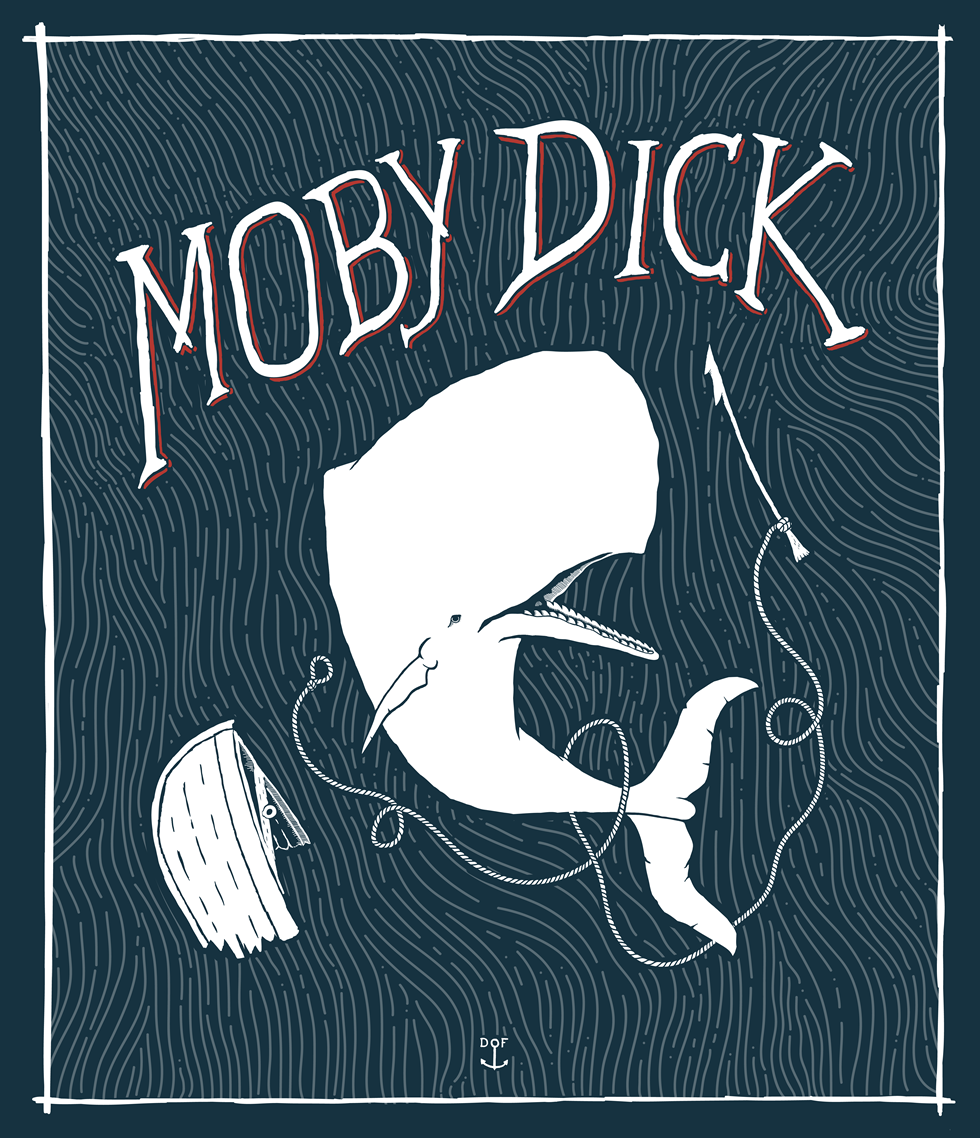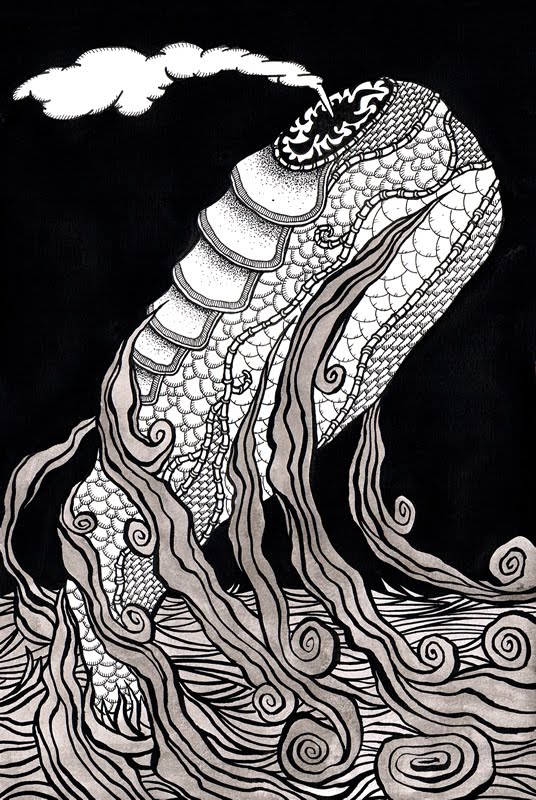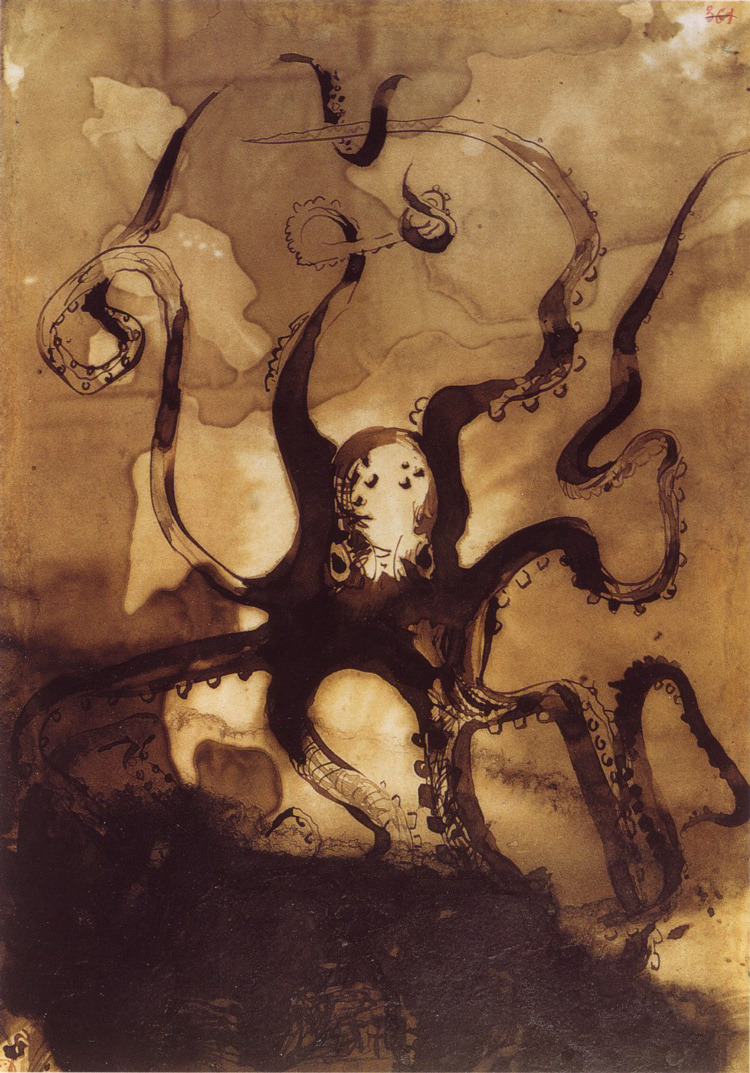Then, I ran across Margaret Cohen's The Novel and the Sea. Cohen is a literature professor at Stanford University and her specialty is the study of the Novel. The study of the novel is not merely the study of books, but the special narrative form of the novel, a genre characterized by the description of everyday events. Sometimes included under this umbrella is the Romance- a narrative that describes uncommon and marvelous events (Moby Dick is often included in this genre). I'm not a specialist in Novel studies and I'm grossly oversimplifying the field, but I picked up Cohen's book because her argument is this: literary theorists have often noted that the novel is characterized by a lack of labor in the narrative but the marine novel is different. That is, the genre of the novel was developed to be read by a certain class of people for leisure purposes. Rich people read novels. Even though the form of the novel is something that is believable, that doesn't suggest that it was everyday life for everyone. Everyday life for rich people wasn't a life of labor but of leisure. The novel wasn't about labor. But Cohen suggests that this is different in the marine narrative. In the marine narrative, labor, the very act of knowing and surviving on the sea, takes center stage regardless of the class of the characters presented. In some ways, the suggestion is that you can't write about the sea and write about leisure only- labor is the default way of learning the marine environment.
Cohen uses a lot of examples, including Robinson Crusoe, Moby Dick, Twenty Thousand Leagues Under the Sea, and Toilers of the Sea (among many others). As I read Cohen's work and her arguments about labor, I admit that I was a bit lost- not because it isn't a great book but because I wanted to actually read the books from which she drew her examples. So I did. I read all of these books in the last couple years and I've been thinking about them in relation to labor. And something interesting happened when I read these books myself- I began to wonder, not just if the marine novel was special because it contained labor, but because of the types of labor they described.
While reading the books, I noticed two types of labor descriptions involved in working on the sea: physical labor or the labor of working on a ship and mental labor or the work required to know the ocean and its inhabitants.
Physical Labor:
The physical labor described in these books is the work required to keep a person alive and a ship afloat for any length of time. In all of these narratives, the reader is not just offered glimpses of what this takes, but is given an in depth lesson on seafaring. In Moby Dick, we are offered images of what it is like to ship out from Massachusetts, to bunk with strange bedfellows and stand watch on deck.Ishmael gives an in-depth portrait of the physical labor required to hunt whales, break them down, and drag them to port. Both Melville and Hugo outline the etiquette of speaking with other ships, and getting information and mail while at sea. Even a romance like Verne's Twenty Thousand Leagues identifies boring, everyday requirements of seafaring in the Nautilus- finding food, burying the dead, and surfacing for air. Hugo's Toilers of the Sea introduces the reader to the inner workings of steam ships, navigating around the Channel Islands, the names and ways of navigation of every reef formation in the area, and a large amount of information on ropes and knots.
In addition to the everyday, the romantic portion of these novels, the uncommon, involves extreme physical labor. In Robinson Crusoe, Crusoe describes the physical labor required in salvaging from wreckage, building a homestead, raising goats and crops, and generally surviving alone on an island for forth years. In Toilers on the Sea, the protagonist Galliat also salvages from a steam boat and each backbreaking step, from building a makeshift forge to sleeping in rock crevices and scavenging for crabs on the rocks is recounted for the reader.
This type of labor seems to be the one on which Cohen focuses. She suggests that this labor is telling because it signifies the way that a form of knowing the sea through physical labor. The authors show their understanding of the marine environment by recounting how amazing their characters are at working on and in the water. All the protagonists are great navigators, they know the water and its peccadilloes because they are experienced workers in that environment. Through physical labor one becomes an expert at marine survival. When you read these works, you see this form of the narrative and Cohen's work really resonates. But I couldn't help but think of another kind of labor that I saw in these narratives and that was mental labor.
Scientific Labor/Mental Labor:
In one of the most famous chapters of Moby Dick, the reader is introduced to a taxonomy of cetaceans. Really the chapter is just a laundry list of whale names and the reader (at least this reader) is a bit baffled- why include this in a book about hunting a whale? Amidst an adventure narrative, characterized by physical toil, we encounter this seemingly sterile way of knowing the ocean- by naming. In Moby Dick, I might have thought this was indicative more of Melville than the marine novel, but I saw a similar way of knowing in Verne and Hugo. In Twenty Thousand Leagues Under the Sea, the narrarator spends a large chunk of the chapters describing the species seen from the windows of diving suits or the Nautilus. In lieu of toiling for survival, as the crew is obviously doing everyday, the prisoners on the Nautilus perform another form of labor- that of naming the ocean creatures and observing their habits. Even in the physical act of wearing heavy gear to walk under water, we are granted a lesson on the newest marine technologies:
"It is to use the Rouquayrol apparatus, invented by two of your own countrymen, which I have brought to perfection for my own use, and which will allow you to risk yourself under these new physiological conditions without any organ whatever suffering. It consists of a reservoir of thick iron plates, in which I store the air under a pressure of fifty atmospheres. This reservoir is fixed on the back by means of braces, like a soldier's knapsack. Its upper part forms a box in which the air is kept by means of a bellows, and therefore cannot escape unless at its normal tension. In the Rouquayrol apparatus such as we use, two india rubber pipes leave this box and join a sort of tent which holds the nose and mouth; one is to introduce fresh air, the other to let out the foul, and the tongue closes one or the other according to the wants of the respirator. But I, in encountering great pressures at the bottom of the sea, was obliged to shut my head, like that of a diver in a ball of copper; and it is to this ball of copper that the two pipes, the inspirator and the expirator, open."
"Perfectly, Captain Nemo; but the air that you carry with you must soon be used; when it only contains fifteen per cent. of oxygen it is no longer fit to breathe."
"Right! But I told you, M. Aronnax, that the pumps of the Nautilus allow me to store the air under considerable pressure, and on those conditions the reservoir of the apparatus can furnish breathable air for nine or ten hours."
"I have no further objections to make," I answered. "I will only ask you one thing, Captain--how can you light your road at the bottom of the sea?" "With the Ruhmkorff apparatus, M. Aronnax; one is carried on the back, the other is fastened to the waist. It is composed of a Bunsen pile, which I do not work with bichromate of potash, but with sodium. A wire is introduced which collects the electricity produced, and directs it towards a particularly made lantern. In this lantern is a spiral glass which contains a small quantity of carbonic gas. When the apparatus is at work this gas becomes luminous, giving out a white and continuous light. Thus provided, I can breathe and I can see." "Captain Nemo, to all my objections you make such crushing answers that I dare no longer doubt."
This type of information- the scientific and technological details of marine science are integral to the marine novel narratives.
One of the interesting things about this intertwining, braiding, knotting of ways of knowing to me is that is is possible in all classes of workers on the ocean. While we might be tempted to think of Gilliat (Hugo's unemployed (?) protagonist) as being the ultimate in physical laborers and someone like Professor Pierre Aronnax (Verne's marine biologist) as the ultimate in mental laborers, the truth is that most of the characters in these novels utilize both ways of knowing the sea.
Gilliat is a perfect example: he performs great acts of physical labor to strip the engines of a wrecked steamer and these acts are described in extreme detail in the novel. Gilliat becomes weathered by the ocean- it strips him of clothing, weight, and water and leaves behind a desiccated husk; he is the closest thing to a merman one might imagine- a reluctant Tritan. But this physical labor is married with a mental labor of knowing the submarine environment. Gilliat describes not just the things he needs to know to physically survive in the moment, but all the things he knows about the sea in general- the seasons, waves, different spaces on a ship, different types of knots and sails. Half the book is a lesson in types of ships (the other half a tirade on Hugo's hatred of Catholicism but that's a different blog post on ways of knowing). In one particular chapter, Gilliat comes across a particularly disturbing creature- a "devil fish". This organism (The Monster) is described first in comparison to other land animals, and then the author goes into detail about how it is shaped, how it hunts, and then finally its scientific categorization.
These marine narratives make me think of Anne Secord's work on Science in the Pub. Secord's work suggests that not only did a wide variety of classes participate in science, but they did so because it meant something important to their everyday lives. In her study, artisans participated in the scientific practice of finding and naming new botanical species because the practice was meaningful in their culture. Horticulture, herbalism, and floriculture were part of the everyday life of artisans in the English countryside. Far from only being an academic pursuit, the ability to identify, find, and cultivate a variety of botanical species could mean extra money or even health to these individuals. While many individuals cared about this knowledge, scientific naming offered a common ground on which to build commonalities with other people of like mind. The very act of naming and acknowledging formed groups.
As I was reading these marine novels, I kept coming back to Second and thinking about her artisan botanists, sitting in a pub passing specimens around a group and naming. These artisans formed part of the scientific process, but they are unnamed and unacknowledged. That is, their contributions to scientific knowledge isn't particularly well understood. But also, the importance of scientific understandings to their everyday lives is also not well understood. What does the scientific naming of these plants mean to them? Secord explores both of these lines of inquiry and the paper (linked above) is worth a first, second, or third read.
We can apply these ideas to the marine world and just think about it- Yes, the physical labor of being on the water is important, but it appears that the scientific understanding of that environment is equally as important. There have been far more sailors than scientists on the water. Their knowledge of the environment has contributed much to scientific understandings of that vastness; but their scientific understandings might also have contributed to their survival in that environment. Marine novelists seem to recognize this by intertwining the physical and mental into a seamless narrative about the sea. While it might initially seem as if the scientific language is thrown in to appeal to the possible audience of novels (middle to upper classes), we can also read it through the lens of Secord's work to see that it is an important way of knowing the sea for anyone who works on it. It is part of the everyday life of sailors, this knowing and naming.
This doesn't mean that all mental labor on the ocean is scientific naming- we need not only point to Linnean taxonomy to suggest that scientific work is happening. Gilliat's (Hugo's) knowledge of the Sea Devil is half scientifically informed and half folk epistemology. And of course, I'm reading the author's knowledge as the character's knowledge. So I'm welcome to suggestions of how wrong this might be.
However, what I'd like to emphasize is that it seems, as I read more in this genre, that knowing the sea requires physical and scientific knowledge. Of course, we can say this about everything in life, but it is important to me that the marine space and novels about it are where this is laid bare for the reader. And it might be more important to ask why a narrative about this space can do that (since Cohen suggests that this is rare and special).



